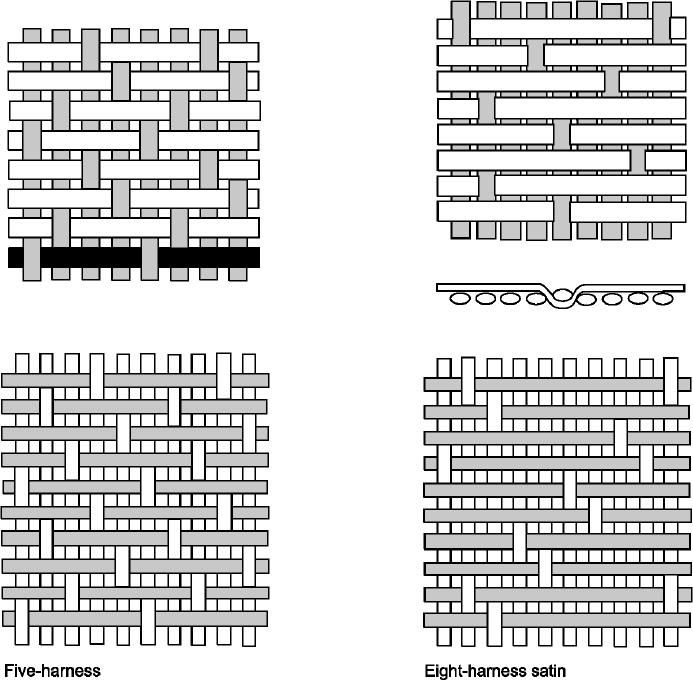
TM 1-1500-204-23-11
Figure 4-8. Satin Weave (4 & 8 Harness Satin Shown)
Having so many yarns running straight and
shapes. Generally speaking, the higher the "harness
parallel gives the surface its distinct shimmer, but it
number, the more drapability a fabric will have. For
also helps improve the overall strength of the material
example, an eight-harness satin will usually conform
when used in composite laminates. Another advantage
to more complex geometries than will a four-harness
to harness satins is an increase in a property known
satin.
as "drape". Plain weave fabrics exhibit poor drape
properties and often have to be relief-cut when used to
The use of harness satins poses a small prob-
make parts with complex shapes in order to get them to
lem when trying to design a symmetric laminate. Con-
lay lat and avoid wrinkles. Relief-cuts are generally
sider an eight-harness satin fabric, it is essentially row
undesirable as they tend to weaken the structure.
upon row of warp yarns only loosely interlaced with
On the other hand, satin weaves are known for their
the ill yarns running the opposite direction (only every
exceptional drape properties and are the fabrics of
eight yarn). The net result of this is a fabric that, in
choice for parts having compound curves or complex
and of itself, is not symmetrical. This is of particular

